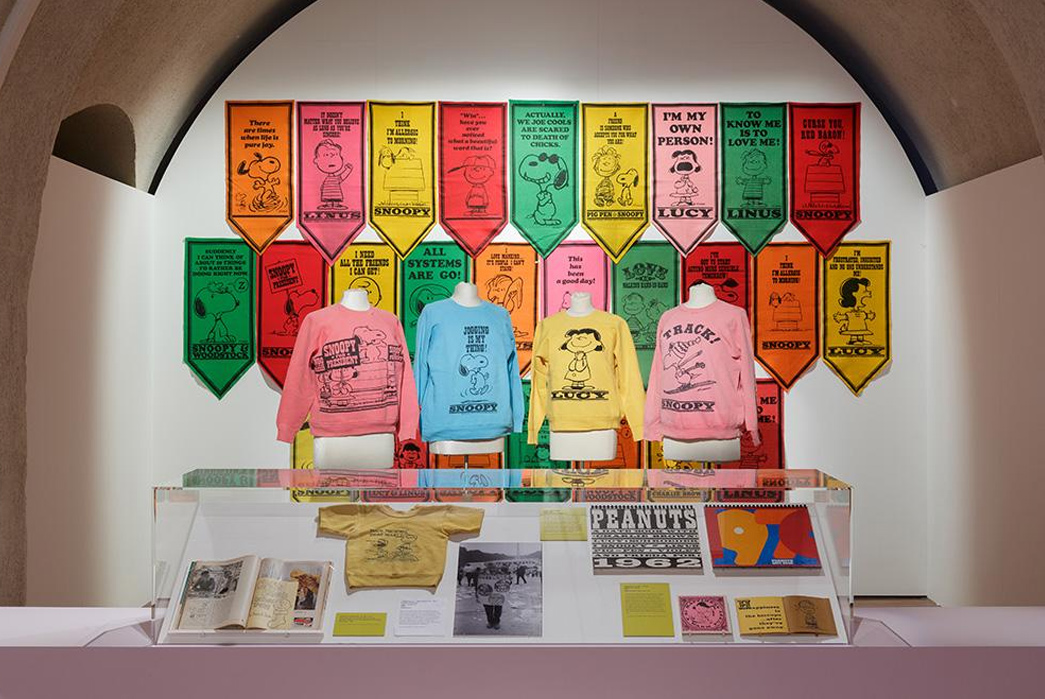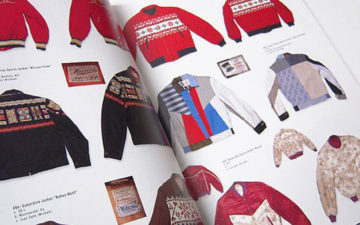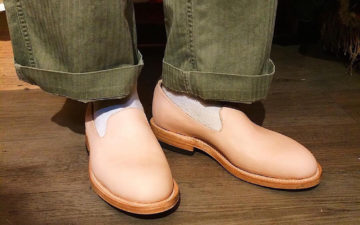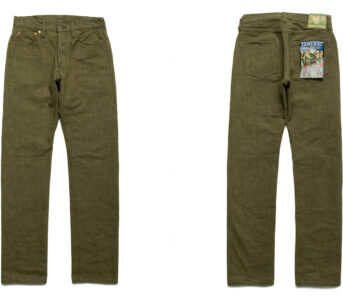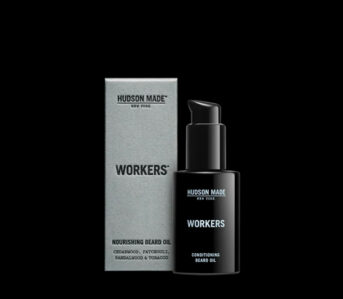Russ Gator is half of TSPTR, a clothing label driven by counterculture, rebellion, and storytelling. As well as heading up TSPTR, Russ is a lecturer, vintage clothing enthusiast, and a fountain of knowledge when it comes to the monumentally iconic cartoon strip, Peanuts – a passion that has earned TSPTR an official worldwide license to produce exclusive Peanuts x TSPTR clothing collections for nearly 10 years.
Peanuts has a strong presence in pop culture and its legendary characters like Snoopy, Charlie Brown, Woodstock, and Lucy have appeared in many modern art forms. Peanuts’ creator, Charles M. Schulz, used Peanuts as a gentle yet powerful medium for social commentary, cleverly delivering important messages through cute and masterfully designed cartoon characters.
With all this in mind, we caught up with Russ Gastor to chat about TSPTR, his past brands, and the social context of Peanuts.
Heddels (James Smith): Hey, Russ. Nice to make your acquaintance, albeit digitally for now. For those who may not know who you are, can you introduce yourself and describe what you do?
Russ Gator: Good to e-meet you too! I’m one half of TSPTR, I’ve been working in the industry for just over 20 years, on previous brands including Heritage Research and various bits of consultancy. I’m also an occasional lecturer at Nottingham School of Art & Design and write for various publications.
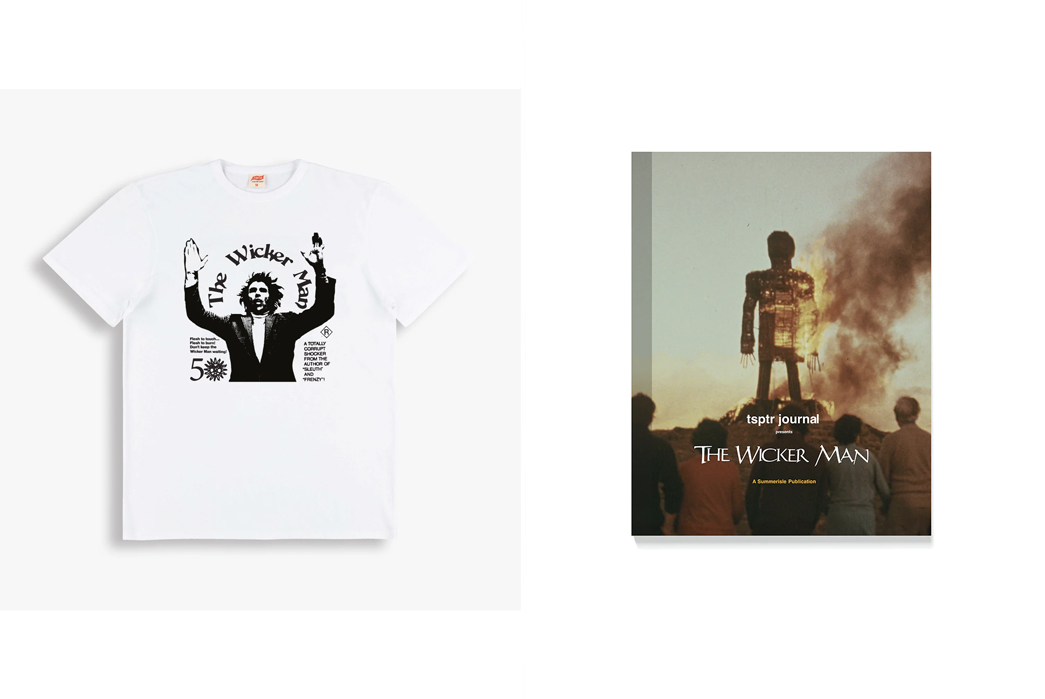
TSPTR x Dan Wilson Wicker Man 50th Anniversary Tee & TSPTR Journal Wicker Man Edition, available at TSPTR.
RG: It’s been pretty crazy this far, our collaboration with Studiocanal for the 50th anniversary of The Wicker Man has taken a lot of focus and energy, the result has been well worth the input though. Currently putting the finishing touches to the SS24 collection ready to show buyers, we’re particularly pleased with how this one has turned out.
H: Tell me about you ‘got into’ this corner of the fashion world. Was there a sartorial gateway drug, so to speak?
RG: The inextricable links between music, style, and subcultures were the original driving force I guess, my formative years were spent obsessing over bands like The Beach Boys, Velvet Underground, Byrds, and so on, so I developed a taste for vintage clothing. By the late 80s/early 90s I was very into the Sub Pop scene and the bands coming out of Scotland at that time which also fuelled my stylistic interests.
In the mid-90s I had stalls at Camden and Portobello selling vintage clothing, mostly specializing in pre-83 Nike and Adidas with a bit of denim and anything else interesting I could find. Over that period I learned a lot from the older sellers who’d already been around the vintage block a few times since the 80s and were well-known in the collecting world. I guess that was my entry point but I never had plans to get into the fashion world, that happened by accident.
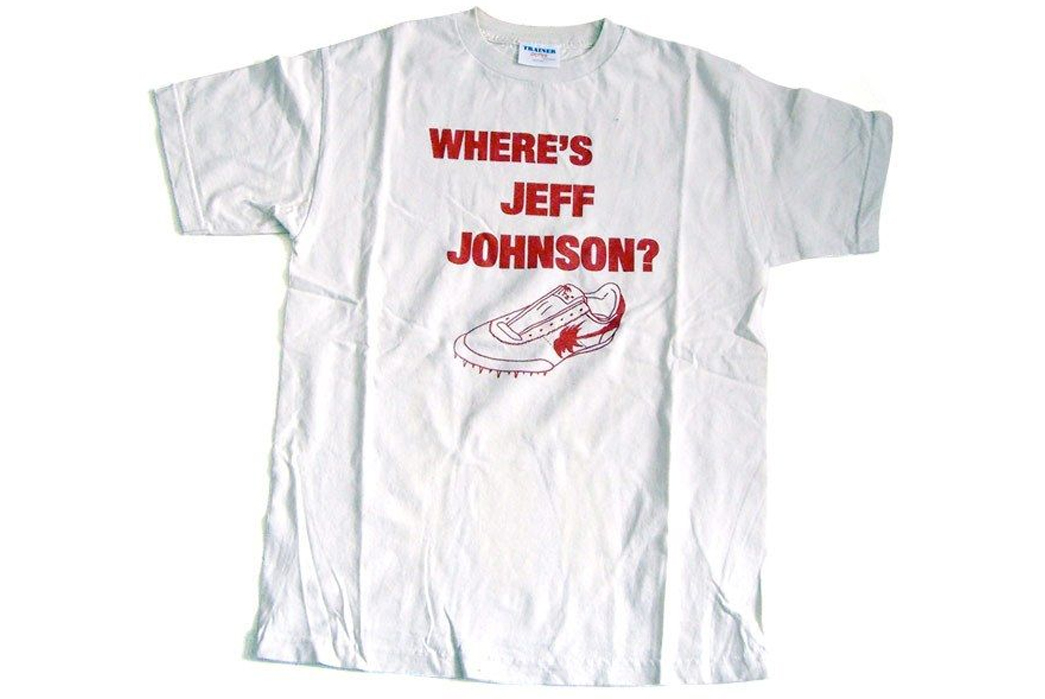
An original ‘Trainer Spotter’ Tee by Russ Gator, which featured in Phil Knight’s book, Shoe Dog.
H: When did you first start designing/producing within this space?
RG: I’d not long started teaching contextual theory on a Fine Art degree when a friend of mine (and fellow vintage collector) suggested we make a few t-shirts that expressed our love for some of the more obscure 70’s Nike models and our dissatisfaction at the current state of the brand. We made a handful of tees and gave some to friends, very quickly we had a queue of people who wanted one, which then led to a great store in Brighton called Jello asking to stock them.
We made a few more, then got a call from the Levi’s concept store Cinch in London, they wanted to sell them too. Not long after we received a call from the BEAMS buyer in Japan asking to sell them. It got fairly serious quite quickly and we both had to make a decision whether to quit our jobs and go with it or just let it slide. We chose the former and Daniel and I have been in business together now for 20 years. Years later when Phil Knight released his autobiography Shoe Dog he mentioned one of the original tees we’d made (referencing Jeff Johnson) in the opening chapter.
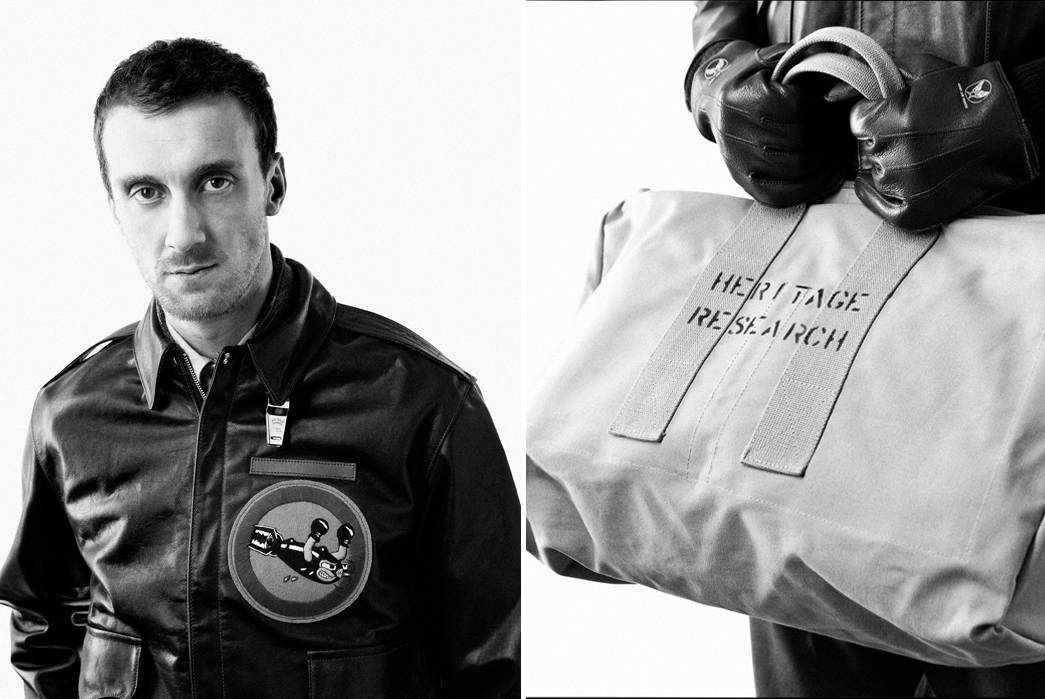
Shots from Heritage Research 2009 lookbook. Heritage Research was one of Russ Gator’s first brands.
H: When and why did you establish TSPTR?
RG: So TSPTR took shape in 2014. We’d just decided to stop Heritage Research for various reasons and wanted to do something that wasn’t so sartorial. We knew the new brand should have a good jersey and fleece categories as vintage tees were a passion for both of us but we were primarily interested in creating a brand that had that could also be a carrier for our love of countercultural history.
We’d also been contacted by Peanuts, they’d read we were big Peanuts collectors and fans and wanted us to make a Heritage Research x Peanuts collection. We really wanted to do it but knew Heritage Research wasn’t really right for that collaboration, so we began to develop the TSPTR concept.
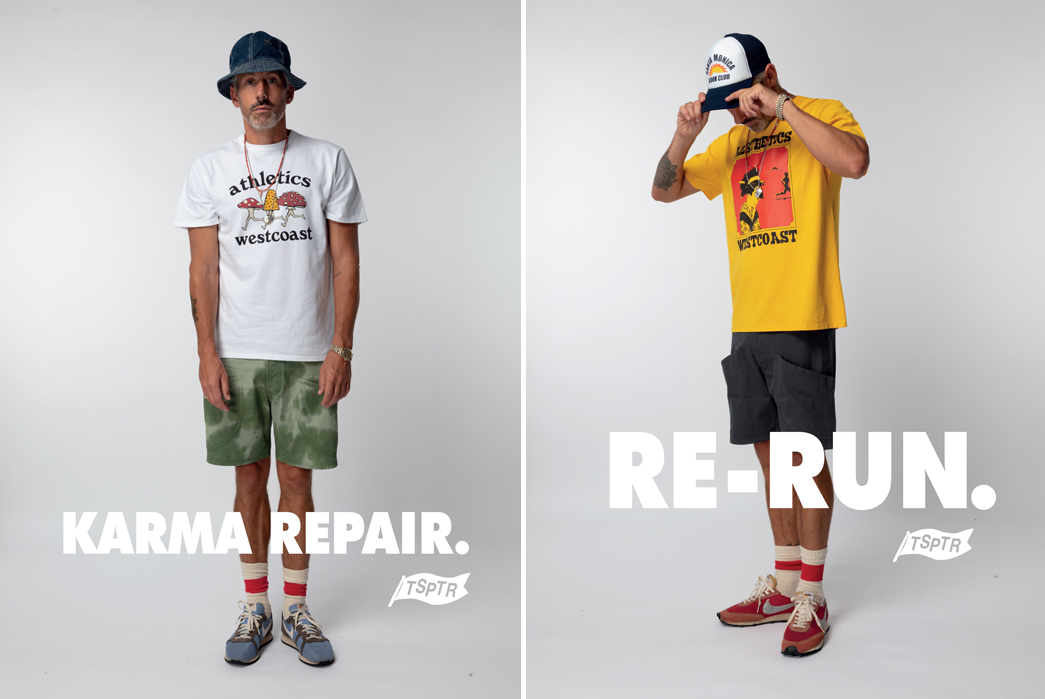
Shots from TSPTR’s Aesthetic West Lookbook 2023
RG: TSPTR is an acronym for Truth, Symmetry, Pleasure, Taste, and Recognition, the five design principles of the American modernist architect Louis Sullivan, the ‘father of skyscrapers’, we subscribe to those values so It was important to us to balance his concept of form follows function with the aesthetic/storytelling element.
We wanted it to be great quality and ethically made but still within an affordable scale. We had a number of contacts in Portugal so started developing and sampling there. The main brand ethos was clear early on, every collection would have a specific theme seated in or around an event or movement within the counterculture. We wanted it to work on multiple levels and be something more subcultural than fashion.
H: Tell us about Aesthetics West, the TSPTR SS23 Collection.
RG: I’d been reading a lot about the Esalen Institute, a secretive private ’spa’ located in Big Sur that started in the early 60s and became a hub for a lot of countercultural activity, from CIA-linked LSD group testing to the development of sports science and the flow state. A lot of the running concepts developed there were used by NIKE coaches when they formed Athletics West in 1977. I was really fascinated by the crossover in worlds and we began to work on something that expressed both worlds and would allow us to tell the stories that interconnect them. Within this period that the brand focuses on there are always a lot of strange crossovers you’d never expect between disparate individuals, we enjoy highlighting them and creating something that visualizes it.
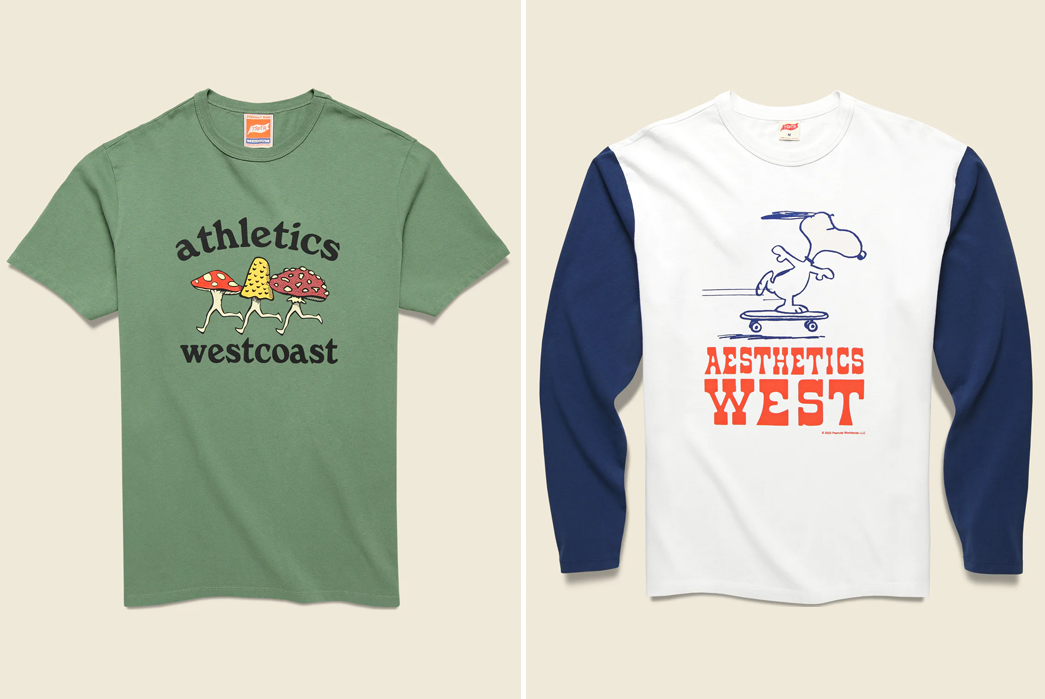
TSPTR Fun Run Tee and Skate West Tee, available at Stag Provisions for $54.95 & $59.96 respectively.
H: TSPTR has a deep connection with Peanuts, with proprietary designs co-signed by the Schulz family. Can you tell us how you forged this partnership?
RG: Yes, we’ve had a worldwide license now for nearly 10 years producing a Peanuts collection every season. As discussed they’d contacted us initially regarding a Heritage Research collab which we’d politely declined but asked them to bear with us and we’d show them something new soon. We flew out to Santa Rosa in California not long after to meet the Schulz family at their studio/museum/ice rink complex. As huge Peanuts collectors and fans this was obviously a big deal, Charles Schulz’s studio has been preserved exactly as he left it so I was able to sit in his chair at his drawing board which was mind-blowing.
We outlined what we’d like to do with Peanuts as no one had really done anything like it before and they were intrigued if a little scared haha. Apart from a few Japanese brands redoing some of the 70s stuff, at that point, all Peanuts apparel was basically generic and didn’t tell the incredible story of Schulz or Peanuts at all. We wanted to dig into the social commentary within the strip, how Schulz was hugely influential in the civil rights movement, how he fought for gender equality, how important his work was to soldiers in Vietnam, all the stuff that nobody seem to know about. Thankfully they cautiously agreed and we’ve been championing these stories ever since.
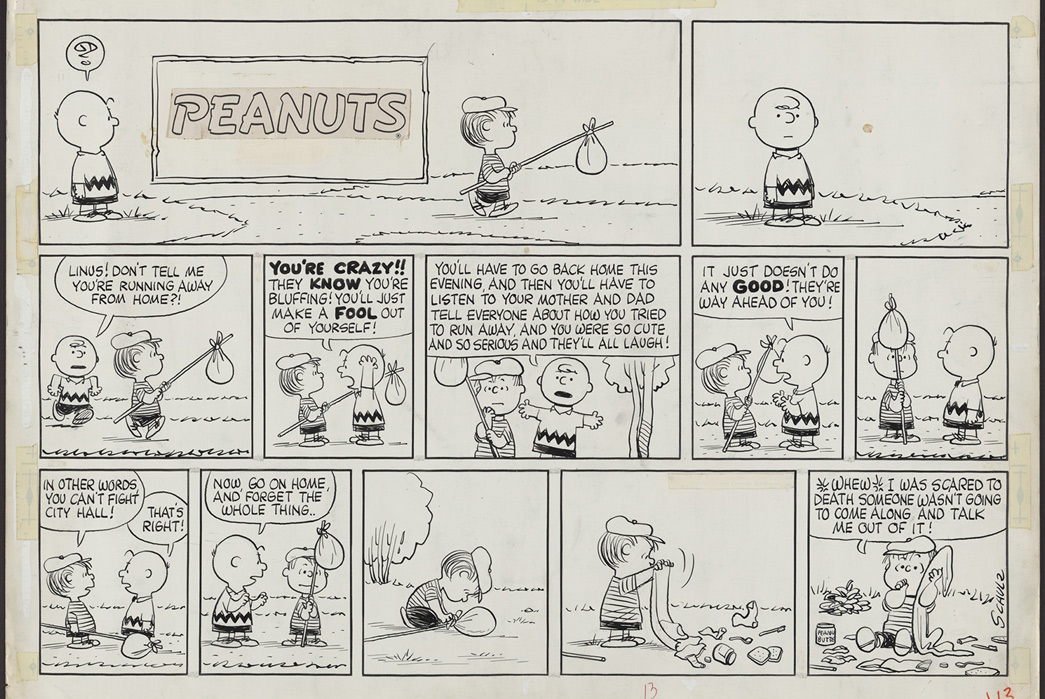
A 1950s Peanuts strip via The Library of Congress
H: I’ve always been fascinated with the whole Peanuts thing. When did Peanuts characters first become popular motifs in clothing?
RG: San Francisco’s Determined Productions were the key catalyst in bringing Peanuts to clothing. Connie Boucher initially approached Schulz with an idea for making Peanuts calendars and books in the early 60s, she cleverly enlisted a young and very hip commercial artist who rendered them in a very edgy pop art style that caught the zeitgeist.
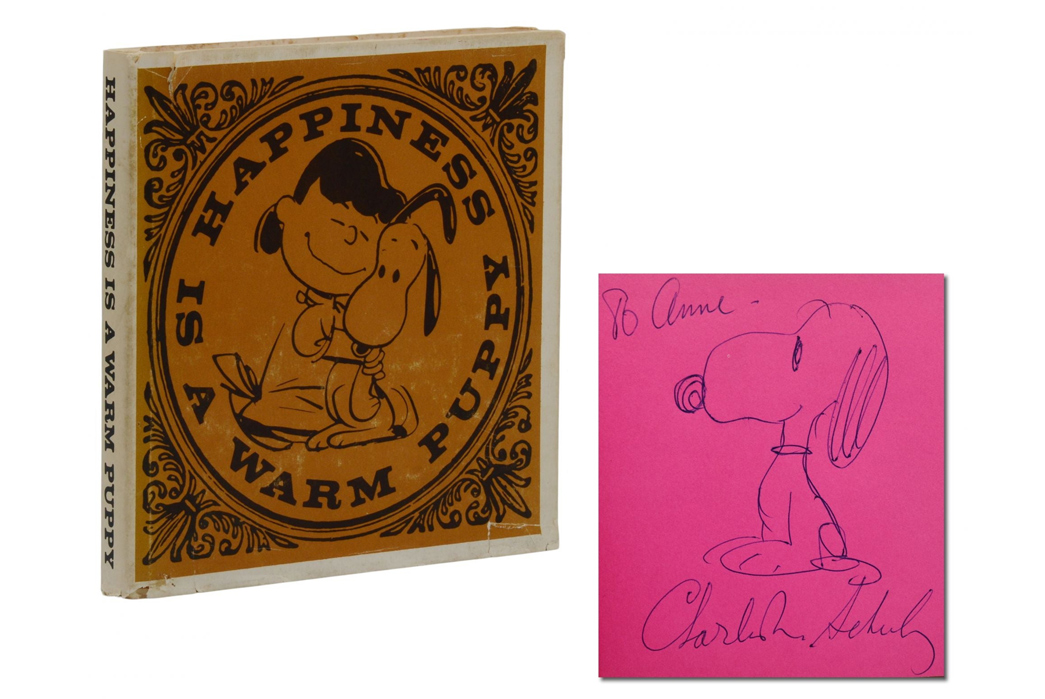
‘Happiness is a Warm Puppy’ Book by Determined Productions, circa 1962. Image via Burnside Rare Books.
In 1965 they released the first Peanuts sweatshirt range, no one had seen anything like this before. Prior to this sweatshirts were sports/collegiate items usually in grey or putty but Determined released sweats in bright crazy colors named Peacock Blue, Sunshine Yellow, Ridiculous Red, Shocking Pink, Grassy Green, and emblazoned front and back with big black Peanuts graphics rendered in a kind of Edwardian circus poster vibe. Needless to say, they became super desirable with young people, especially after various famous actors and musicians including Keith Moon and the Grateful Dead were photographed wearing them.
H: Was Peanuts ‘big’ before its characters became big imagery within popular culture? Or is it the other way ’round?
RG: Peanuts was always BIG, it was already big in the early 1950s as its characters and themes spoke to the Beat generation, mainly because the strip worked on multiple levels it could be enjoyed by a child at face value and also read as acerbic social commentary by a tuned-in adult.
The licensing boom of the 70s and 80s pushed it to another level but Peanuts was never just pop culture, the academic world appreciated Schulz’s work as much as wider culture, legendary cultural theorist Umberto Eco wrote an essay on its importance, and counterculture icon Timothy Leary wrote of it in the Psychiatric Journal among others.
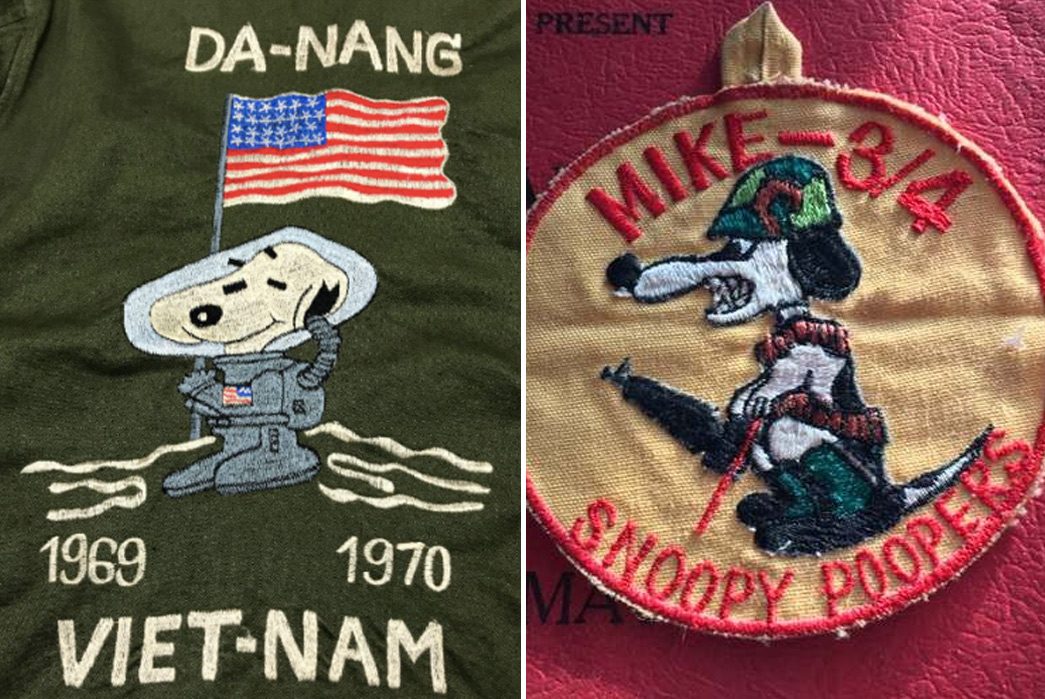
Custom Snoopy embroidery on the back of a 1960s Field Jacket via eBay and an original custom Snoopy military patch via U.S. Militaria Forum
H: It’s common to see military garb decorated with Snoopy, Woodstock, Joe Cool, or other Peanuts characters. Can you explain how this came about and the context of Peanuts imagery within the military?
RG: In the mid-60s Schulz began to recalibrate the tone of the strip in line with what was happening socially in the US – civil rights protests, assassinations, war. He began to reflect on his feelings about those things. The strip subtly and sometimes explicitly engaged in serious debate about these issues. Being a soldier himself, his personal empathy for the soldiers in Vietnam began to come through in storylines. Many of the soldiers in-country would have grown up on the Peanuts strip which was now specifically discussing them and what was happening in South East Asia.
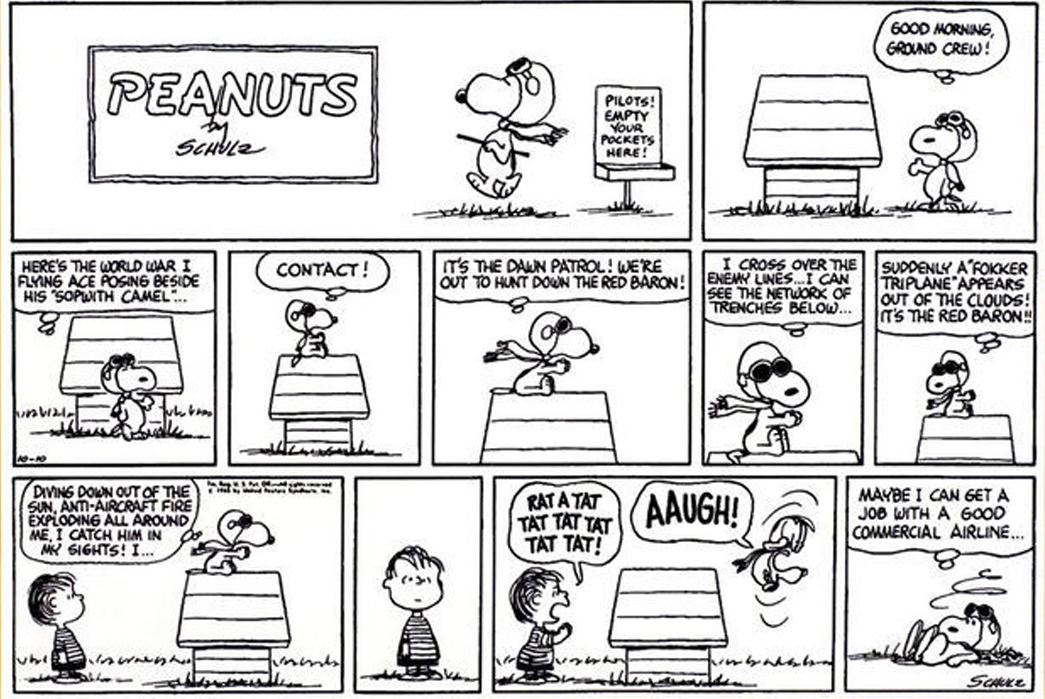
The first Flying Ace Peanuts Strip from October 10, 1965. image via Knoxville News Sentinel.
In 1965, six months after the US escalated its military presence in Vietnam, Schulz introduced Snoopy’s Flying Ace character. He began to use the Flying Ace storylines as an allegory for what was happening in Vietnam and express his own feelings about the horrors of war. These strips resonated with the drafted soldiers who began to see the Peanuts characters as lucky mascots, naming forward operating bases after Charlie Brown, painting Snoopy on the noses of Huey Cobras and other hardware, and having unofficial unit patches made that featured their favorite characters.
H: In my experience, most people haven’t consumed any Peanuts content at all and often don’t know any of the characters other than Snoopy and Charlie Brown. Do you think that in dark times, the playful and perfectly illustrated characters, often stoic reflections, and subtle humor of the franchise offer hope and respite? I have a Peanuts mug that says “Happiness is a warm puppy” which makes me smile inside every morning. But I’m more pointing towards the presence of Peanuts in settings such as the military as mentioned above
RG: I think that’s age dependant, I would argue that most people over 40 have some kind of relationship with Peanuts due to their childhood, whether it’s the Peanuts books, the animated TV specials, or wearing a Peanuts t-shirt when they were a kid. There’s a broad affection for Peanuts if you grew up in the 70s or 80s. Schulz’s aphorisms such as ‘Happiness is a warm puppy’ are really universal and seated in the human condition which is what makes them resonate.
Personally, I think the importance of Peanuts during dark times doesn’t lie within the inclusive warmth of the strip but within its power as a medium for social commentary and deftly exposing bad things that need exposing.
H: Do you have a personal favorite Peanuts illustration, motif, or quote?
RG: That’s a difficult one, the first introduction of Franklin into the strip in 1968 is extremely powerful due to its obvious context but my all-time favorite is probably the Mr. Sack sequence from 1973, it’s a genius piece of comedic existentialist writing that speaks to human behavior and how we struggle to create meaning in a universe where no meaning is evident.
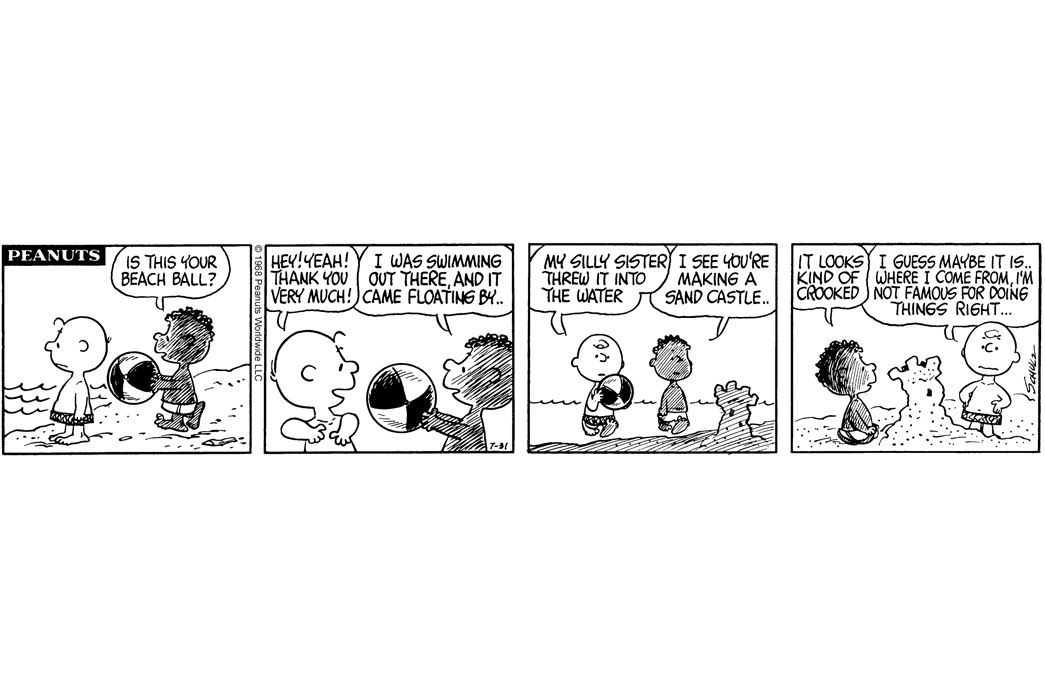
Franklin’s first appearance in the Peanuts strip in 1968, via NPR.
H: Thanks for the chat, Russ
RG: No problem!

